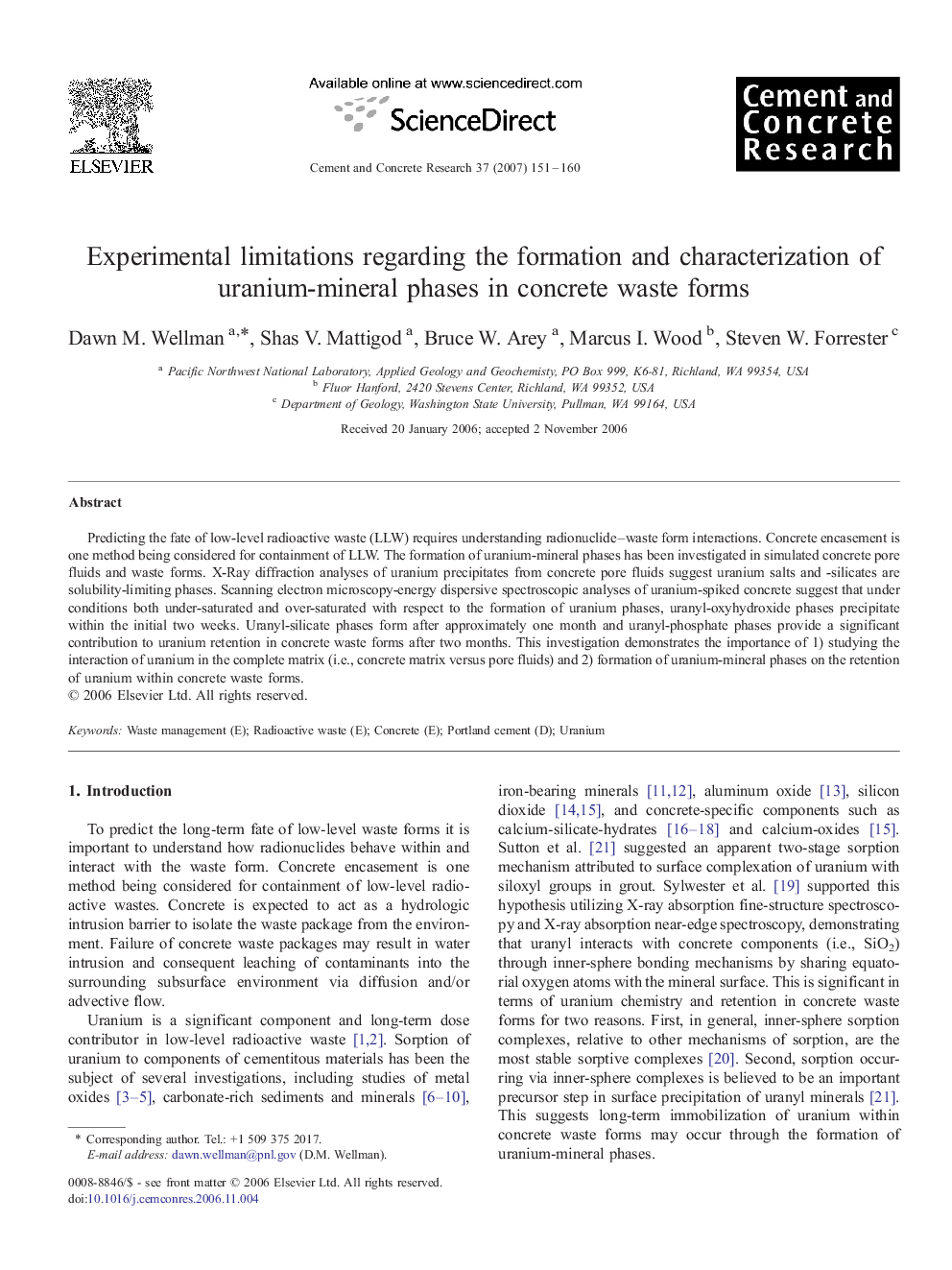| Article ID | Journal | Published Year | Pages | File Type |
|---|---|---|---|---|
| 1457850 | Cement and Concrete Research | 2007 | 10 Pages |
Predicting the fate of low-level radioactive waste (LLW) requires understanding radionuclide–waste form interactions. Concrete encasement is one method being considered for containment of LLW. The formation of uranium-mineral phases has been investigated in simulated concrete pore fluids and waste forms. X-Ray diffraction analyses of uranium precipitates from concrete pore fluids suggest uranium salts and -silicates are solubility-limiting phases. Scanning electron microscopy-energy dispersive spectroscopic analyses of uranium-spiked concrete suggest that under conditions both under-saturated and over-saturated with respect to the formation of uranium phases, uranyl-oxyhydroxide phases precipitate within the initial two weeks. Uranyl-silicate phases form after approximately one month and uranyl-phosphate phases provide a significant contribution to uranium retention in concrete waste forms after two months. This investigation demonstrates the importance of 1) studying the interaction of uranium in the complete matrix (i.e., concrete matrix versus pore fluids) and 2) formation of uranium-mineral phases on the retention of uranium within concrete waste forms.
